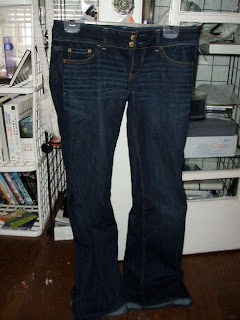Wednesday, February 24, 2010
Props
Wednesday, February 17, 2010
Dealer's Choice Pitch
Sydney Hunter is a high school girl whose life was good until her mother passed away in a car accident. Living with her workaholic aunt, she attempts to sew the pieces of her life back together on her own terms, until she’s given a mysterious diary on her birthday. But when she goes to write her troubles down on its pages, she realizes that her personal journal is actually a two-way connection to a boy, Andrew Lions, that may just save her from the loneliness she feels.
His good nature on paper doesn’t reflect his sarcastic remarks in real life, but as the audience learns that her aunt has made this older boy, the girl’s personal guardian, we realize that he knows her, but she knows him only vaguely from the distant past where his mother once invited him over as a family friend. Even more alarming is the fact that he doesn’t appear to be quite fit for the job. In life outside the journal, he’s a freshly graduated college student who works as a part-time plumber. He’s completely rough around the edges, and doesn’t seem to trust anyone until he meets Sydney.
Sydney on the other hand is a bright, sensible senior in high school who tends to only see the good in others, getting hurt by the constant betrayals of those who seek to use her good nature. A dare that she writes about planning to take makes him come running to her rescue. As a result of finding her and having coax her (a girl afraid of heights) down from a tree he tosses the journal aside and ultimately ends up revealing his identity. At first he attempts to deny it, but when she confesses that she likes him he can’t turn away. Instead, he awkwardly begins a relationship with her.
*Central goal of this film? Overall, the two change each other for the better, and get together at the end. I guess you could say, the goal is that he becomes a better person and she feels less lonely.
*In abstract terms? In abstraction, there are often forces out of our control that make up things like love. In this case, it’s a magic book and a freak accident. Things don’t always go the way you plan, not even when they’re planned perfectly, but that doesn’t mean they have to end badly.
Project 3 - Inspirations



Project 2 - Video Lock
Tuesday, February 9, 2010
Project 2 - Self-Critique
Tuesday, February 2, 2010
Lighting and Eyeline
Group Assignment - The Portrait




- fake flowers
- photo w/ frame
- vase
- paper
- pens
- clipboard
- post-it notes
- porcelain cup
- boxes
- portfolio
- keys
- car
- step ladder
- Paper
- boxes
- include most pre-existing materials
- clear away various changing elements in the warehouse & household clutter
- Robbie directs - warehouse scenes (camera - Celia, lighting - Ashley)
- Robbie directs - office scenes (camera - Ashley, lighting - Celia)
- Ashley directs - outside of house scene (camera - Celia, lighting - Robbie)
- Ashley directs - coming into house and walking through dining room and kitchen scenes (camera - Robbie, lighting - Celia)
- Celia directs - balcony scene (camera - Robbie, lighting - Ashley)
- Celia directs - bathroom scene (camera - Ashley, lighting - Robbie)




